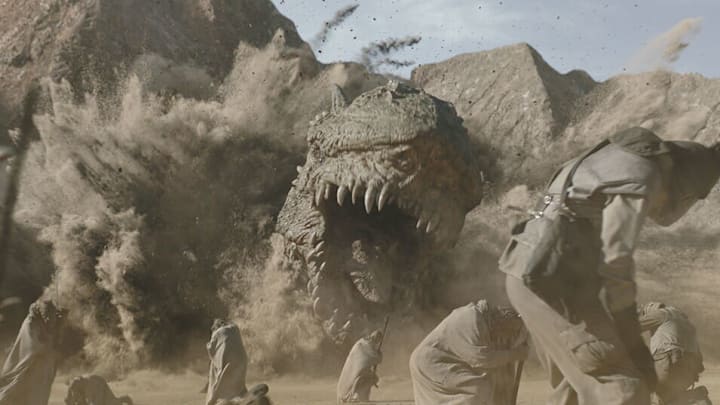When worlds collide, indeed. In a fascinating mash-up of paleontology and pop culture, scientists have named a 500-million-year-old worm fossil from the Grand Canyon Kraytdraco spectatus, inspired by the formidable Krayt dragon from Star Wars.
The discovery, per National Geographic, was originally made during a 2023 expedition led by Giovanni Mussini, a paleontologist and doctoral student at the University of Cambridge. The team ventured into the depths of the Grand Canyon, navigating the Colorado River and scaling precarious rock formations to unearth fossils from the Cambrian period, a time when complex animal life was beginning to flourish. Among the finds were remnants of brine shrimp-like crustaceans and snail-like mollusks, but the most intriguing discovery was the fossilized remains of a priapulid worm, often colloquially known as a "penis worm" due to its shape.
The creature that was ultimately dubbed Kraytdraco spectatus measured approximately six to eight inches in length. Its most striking feature was its retractable throat, or pharynx, which was ringed with sharp teeth and lined with concentric rows of feathery projections, a unique trait not observed in other known species. This specialized feeding apparatus seemingly allowed the worm to scrape sediment and filter fine particles from its environment.
The name Kraytdraco spectatus was chosen following a suggestion from one of Mussini’s colleagues who was a Star Wars fan. The "krayt" part of the name obviously references Star Wars’ Krayt dragons, multiple species of burrowing carnivores that hail from Tatooine, and are often hunted for the precious pearls they carry in their bodies. Fans of The Mandalorian will remember “Chapter 9: The Marshal,” in which Din Djarin teams up with Cobb Vanth and the Tusken Raiders to defeat the Krayt dragon that has been terrorizing the Raiders’ settlement.
While the name pays homage to a fictional beast, the worm's actual appearance is more reminiscent of the sandworms from Frank Herbert's Dune. However, the name "Shai-Hulud," used for the sandworms in Dune, was already taken for another fossil, leading to the adoption of the Krayt dragon-inspired name.
This discovery adds to our collective understanding of ancient life forms but is also a fun example of the intersection of science and popular culture, showing how elements from science fiction can inspire real-world scientific endeavors.
